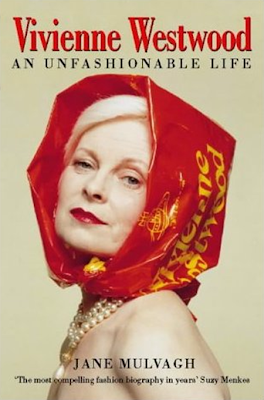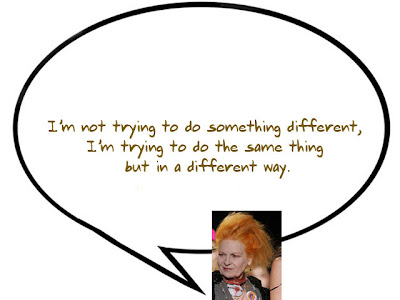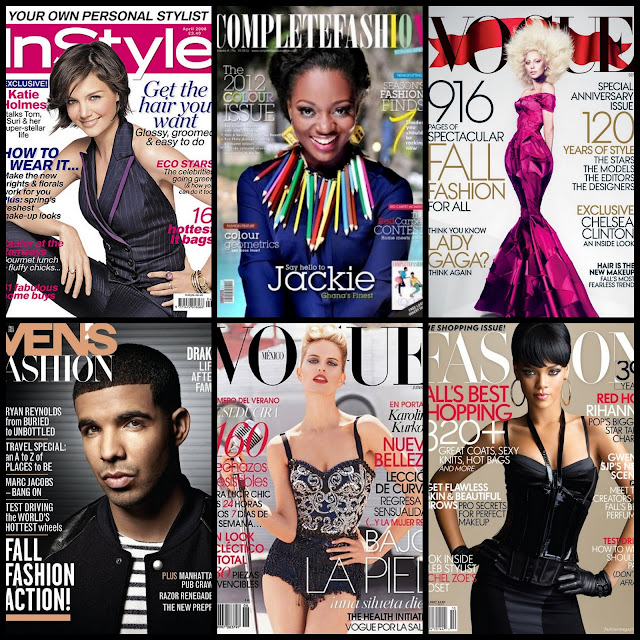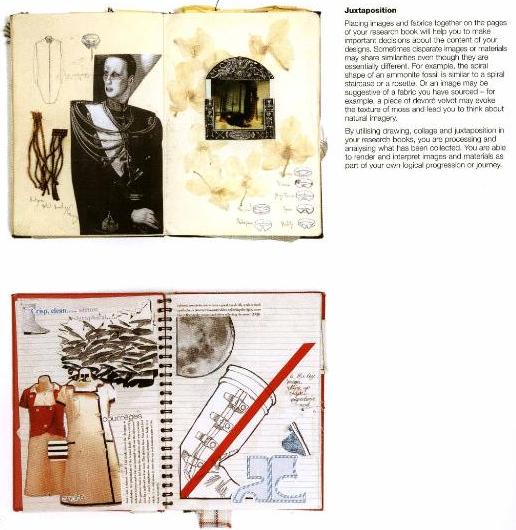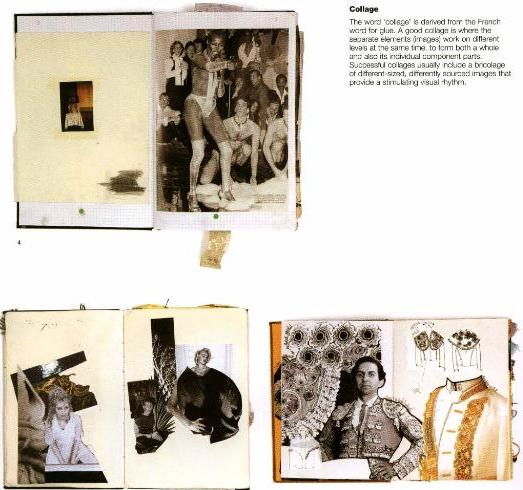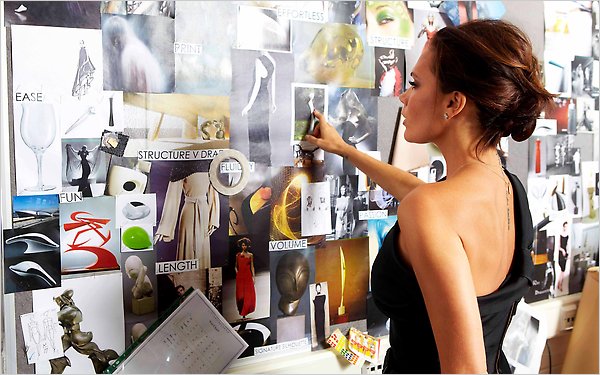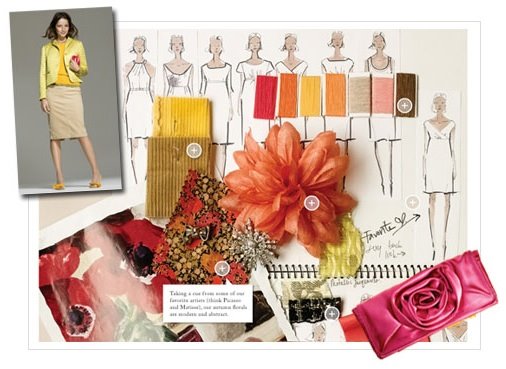The Fundamentals of fashion design, Chapter1.
I have a couple of books and magazines I read when I'm sourcing
inspiration or when I'm lost and I need to get the basics of fashion and
get back on track. I am not someone who enjoys reading a lot of text
without illustrations or practical examples so when I found this book
online I knew it was the perfect Fashion Textbook
for me and I think you upcoming fashion designers and lovers will learn
a lot from it too. I just finished the first chapter and I wanna share
what I learned with you :)
The book introduces you to the fundamental principles of fashion design
and it is packed with various examples of work and inspirational
quotes(I'm a lover of quotes :D) by talented designers, stylists,
models, photographer and others in the fashion industry.
Fashion is a constant search for the new, designers need
to develop theme, source fabrics and develop a cohesive range with them,
understanding the techniques of garment construction is essential.
Vivienne Westwood- Fashion
design is almost like mathematics, you have a vocabulary of ideas which
you have to add and subtract in order to come up with an equation right
for the times.
..:Are you Fashionable?:..
For fashion design it is important to develop an awareness of your own
style and taste (not how you dress-designers are often the worst dressed
in a room because they are too busy thinking of how to dress others)
knowing what you are best at is essential but that doesn't mean you
shouldn't experiment, it can take a while to know yourself (still
finding myself :D) it's not so much being the designer you want to be
but rather finding out the designer you are, some focus on the
understatement or details of garments others design conventional
garments but it is the way they are styled or put together that makes it
original and modern.
..:Know your Subject:..
People say they don't wanna be influenced by other designers work but
unless you know what preceded you how do you know u aren't naively
reproducing someone else's work???
like John Galliano said "I never saw any point in stopping the way a conventional wisdom decreed jacket should be cut. you mustn't be frightened to hide behind pre-conceived ideas. You have to experiment, you just do it and its beautiful because you consider an energy there which feeds you. There are no rules" :)
like John Galliano said "I never saw any point in stopping the way a conventional wisdom decreed jacket should be cut. you mustn't be frightened to hide behind pre-conceived ideas. You have to experiment, you just do it and its beautiful because you consider an energy there which feeds you. There are no rules" :)
Making yourself fashion aware doesn't happen overnight but if you are
passionate about it its only natural to find out, they are numerous
fashion and lifestyle magazines that will inspire and influence your
work (and don't restrict yourself to only Elle and Vogue...lol)
By regular reading you are aware of design industries and cultural
events that influence or are influenced by fashion. They are also
websites that show the latest images from fashion shows e.g
www.style.com , www.nowfashion.com
..:Starting your Research:..
Research means creative investigation and a good design needs a form of
research. Research takes 2 forms: sourcing material and practical
(finding fabric, trimmings, fastenings etc) and the second kind is the
one you do when u have a theme and concept. Themes can be
personal, abstract or literal e.g. Alexaner McQueen's its a jungle out
there 97/98 collection mixed religious painting with the evocation of an
endangered antelope.
"When you see a woman wearing McQueen, there's a certain hardness to the
clothes that makes her look powerful. it kind of fends people off." -
Alexander McQueen
"Animals...Fascinate me because you can find a force, an energy, a fear that also exists in sex"- Alexander McQueen
“The
whole show feeling was about the Thompson’s gazelle. It’s a poor little
critter – the markings are lovely. It’s got these dark eyes, the white
and black with the tan markings on the side, the horns – but it is the
food chain of Africa. As soon as it’s born it’s dead, I mean you’re
lucky if it lasts a few months, and that’s how I see human life, in the
same way. You know, we can all be discarded quite easily … you’re there,
you’re gone, it’s a jungle out there!”- Alexander Mcqueen
Designers may also convey a muse for instance Gwen Stefani was
Galliano's muse. Having a theme holds the body of work together giving
it continuity and coherence and also gives d designer focus.
..:Choosing a Concept:..
You need to be honest while choosing a theme because it has to be
something you can work with, a subject you are interested in that you
understand and stimulates you i.e. choose your concept carefully so it
will help your design and not hinder it. Did a post on Inspiration which has more details.
..:Sources of Research:..
The Internet is a great place to start and a fantastic source of images
and inspiration. A good library is also useful, flea markets and fairs,
charity shops and museums are also useful sources.
Travelling, trips abroad to search for inspiration.
Travelling, trips abroad to search for inspiration.
Research is usually processed in different ways to various designers,
piles of fabric swatches n photocopies which go on a wall, sketchbooks
with images, trimmings, fabrics;
People take all these and produce what is called a Mood/Theme/Story board. Showing your research to others is a great way of to get more ideas about a theme and can be used to communicate your concept to your tutor/employees/a stylist.
People take all these and produce what is called a Mood/Theme/Story board. Showing your research to others is a great way of to get more ideas about a theme and can be used to communicate your concept to your tutor/employees/a stylist.
Research books are not only scraps books, scrap books are unprocessed information,
A research book reflects the thought processes and personal approach to the project and it becomes more personal when its drawn on and written in. Research books include collages, drawings, juxtaposition(images/fabrics)
A research book reflects the thought processes and personal approach to the project and it becomes more personal when its drawn on and written in. Research books include collages, drawings, juxtaposition(images/fabrics)
..:Mood, Theme and Story boards:..
These are Distillation of research, presentation version of the researchbook. Made up of collages mounted on a board used to communicate the theme, concept, fabrics etc
..:Designing:..
Once all that is collated you are ready to design, nothing is more
intimidating than a blank page, its a natural part of d design process.
Don't begin to question your abilities, explore every possibility and
discard nothing. The identity of a designer comes with time but the
identity of a collection can be based on the use of silhouette, detail
and fabric for a season. Certain elements should run through designs to
give them coherence, it could be where the armhole is cut or a
particular kinda button or zipper, method of finishing etc. If these
methods ties in strongly with your theme to work as a whole then you are
on your way to making real statements with your designs. Goodluck...!
:)
| The History of Costumes | ||
When
you think about your next Halloween costume you may wonder where the
whole general idea of costumes came from. By definition, a costume is
really just a set of clothes that comes from a specific era in history
or from a particular country. From the very ancient days of early man to
the fads and trends that are more familiar to us in our modern era,
most costumes that we use to dress up in today have their roots
somewhere in the past. Although traditionally many Halloween costumes
are monsters, various ghouls and other frightful beings, still many more costume looks are based on characters and figures from past or present everyday life.
Come
with us as we look back to the beginning of man’s clothing and costume
journey as we retrace mankind’s steps through fashion’s evolutionary
process. Every historical era has had its notable clothing styles and trends.
When re-creating any kind of character, whether it hails from the
distant past or is from the present day, replicating the fashion looks
of any time period is the most essential part of establishing the very
essence of the character. To understand the fashions that were
important in any one period in history is to greatly understand the
lifestyle and culture of that time period in history. Here's a look at
costume design trends from then till now.
| ||
Ancient Egypt
In the days of Ancient Greece and Rome, fashions were largely draped pieces of fabric, as the needles that would be required for extensive stitching were still very rudimentary, cumbersome and difficult to manage. Wrapping woven woolen fabrics in various styles was the general order of the day and both the Greeks and the Romans were noted for their draped, robe-like fashions. Long basic tunics were the essential costume piece as was a mantle, which was a piece of fabric that was worn on top like a cloak. These robe like garments were often held in place by brooches or pins. In Rome, the Toga was considered to be the garment worn by the most distinguished men in the community. Ironically, women were not allowed to wear the Toga at all, but rather wore what was known as a Stola, which was a type of dress created from draped fabric that could be dyed in various colors. Probably one of the most infamous examples of a Roman Stola is the one that is worn elegantly by the Statue of Liberty herself. To the Greeks and the Romans, clothing was a clear expression of one’s social status. Depending on one’s position in society, the style or color used in one’s clothing would vary. For example, Roman Senators would have their Togas embellished with purple stripes. Ordinary Romans wore clothing made of rougher course woven wool while the wealthier Romans were able to afford more luxurious fabrics like finer wool, linen, silk and the most expensive purple dye which was created using a special kind of sea snails. Medieval Era During the Medieval time period, the type of clothing worn by people was clearly indicative and varied widely according to ones social status. The poor didn’t care much about or have the wherewithal to be concerned with fashion and made most of their simple clothing at home. The wealthy could afford more luxurious fabrics and could also hire tailors to create more beautiful clothing. Armor was used to protect men during battle and combat and like other forms of clothing worn during this same time period, it reflected ones social status. During the medieval period, a form of protective clothing worn often consisted of basic chain mail, which was fashioned by using a series of small rings or loops that were carefully interlocked together in a complex pattern, creating a form of protective garment that would withstand many slashing type injuries. An actual suit of armor was extremely expensive to make and was usually something that was reserved for the elite knights and other important warriors. The armor had to be made to fit the knight with absolute precision so it didn’t restrict movement during battle. Helmets with various moving parts such as visors as well as shields completed the knight’s battle ensemble. Depending on the elaborateness of the knight’s battle gear, it definitely made quite a masculine and a strong fashion statement at the time. The Renaissance period occurred between the 14th and 16th centuries. This era in history was a period of societal growth and great cultural revival, particularly when it came to the arts, architecture, literature and other forms of learning. Obviously the fashions of the Renaissance were deeply affected by what was happening in the world at large. When it came to costume that was popularized during the Renaissance period, it became an era of great excessiveness and extreme bombast. Fashions were ornamented with puffs near the head, on the shoulders and even on the thighs. Feathers were used to trim everything from clothing to wide-brimmed hats. Clothing styles were big, exaggerated and excessive as fashion styles were used in order make a grandiose statement. Rich, heavy and elaborate materials were made into the voluminous fabrics used for Renaissance fashions. Men favored jerkins, which were a type of jacket often fashioned from leather or velvet. These jerkins were paired with hose or full-length trunks and nether-hose, a type of hosiery that was held up by garters below the knee. The hose or tights worn by men were completely open at the crotch, which then itself was covered by a codpiece, a pouch-like piece that covered the front of the pants. This codpiece has created a bit of a stir itself as it was purposefully fashioned and sometimes padded as well as embellished in order to draw attention to a man’s genitalia, and by doing so, it often became the focal point of the outfit. Renaissance Fashion Show Ruffs were a ruffled neckpiece that was worn by both men and women. These ruffs were stiffened with starch and some were made to stand up several inches, some being quite extreme which seemed to be the name of the game during the Renaissance era as a whole. 17th and 18th Century Costume During this period, for the first time in history since the era of the Ancient Romans, a woman’s arms were exposed, and a shorter sleeve length became in style. Women wore a linen shift as an undergarment and her skirts and bodice were often made in separate pieces. If a woman wore more than one skirt, sometimes the outer skirt was pulled up to expose the underskirt. Gone were the heavily boned, structured and supported skirts of prior years. Women’s skirts were now held up with petticoats and slips. Men’s hairstyles were very unique during this time period as well. Most men would shave their heads bald and wear wigs. The wigs themselves evolved as the century wore on, at first being long and free flowing and eventually ending up being heavily powdered to appear white and the hair being pulled back and held in place with ribbons. Women’s hairstyles were fashioned to attain astronomical proportions at times, one style being known as the pompadour. This large hairdo was heavily associated with the French court. The pompadour was named after Jeanne Pompadour, who was one of the better-known mistresses of Louis XV. These enormous hairstyles were adorned with things like toys, birds and other small accessories. 19th Century Costume Women now found it fashionable to have very small waists, thus the corset was a necessary, if not painful implement to make this fashion statement possible. At this time, women began to wear underwear that looked like long knickers. Women wore their hair smoothed down on the top and sides and often had ringlets, poofs, or loops on the sides. Bonnets and hats were almost always worn, along with gloves, especially when the woman ventured outside. Necklines on ladies dresses went back up and the leg-o-mutton sleeve style was very popular, along with the plainer, tubular sleeve type. The cameo brooch became all the rage about mid-century and the look of a cameo pinned at the neckline will always be one that is heavily associated with this time period. The Edwardian Era 1901-1910 Both men and women of this era put a heavy emphasis on hats. Wealthy or distinguished men wore top hats. Middle class men wore bowler hats. Lower class men wore simple cloth caps. The Flapper Era The 1930’s Because of WWII and the subsequent rationing of fabric, styles in this decade became more understated and somewhat dull. Costume and fashion of this time period had a decidedly military influence, even including the introduction of a utility jumpsuit. The jumpsuit was a piece of practical apparel designed so that it could be put on quickly in the case of a sudden attack or when warning sirens blew. Do to fabric rationing, the practicalities of rising hemlines seem obvious as there were limits on how much fabric could be used in any one particular garment. Styles were simple out of necessity and most everything was recycled and eventually refashioned as much as was realistically possible. The 1950’s Women’s 1950’s fashions emphasized an hourglass figure with a small waist, almost conical breasts and full hips. Wide shoulders and very full knee length skirts were the order of the day along with short boxy jackets and pencil style skirts. Circle skirts were very popular along with small-collared blouses that buttoned up the front. Cardigan style sweaters with a plain neckline were also a 1950’s staple fashion item. During the 1950’s, men also began to favor wearing the cardigan sweater. Men’s pants were narrower and jackets were more unstructured. Movie star idols such as James Dean made jeans and the white t-shirt a huge fashion statement of the times and Elvis Presley made the wearing of blue suede shoes nearly legendary. Fashion went a little crazy during the 1960’s. Colors and wild prints were used abundantly. Women’s hemlines varied from mini-skirts to maxi-dresses with accompanying go-go boots and huarache sandals. Hippie styles were largely androgynous looks that were inspired by Native American trends, including long hair worn by both sexes, headbands, beaded jewelry and unisex sandals worn as footwear. Wearable art became very fashionable including epic tie-dye colors imprinted on loose fitting tunic style tops. The 1970’s The 1980’s were largely influenced by the pop stars of the decade, including the likes of Madonna, MC Hammer and Cyndi Lauper. Movies too such as 'Flash Dance' made an impact on the 80's fashion. Parachute pants, oversized tops paired with stirrup pants, leg warmers, fingerless gloves, Member’s Only jackets and huge plastic earrings were just some of the more notorious trends that were a part of this eclectic fashion decade. Today’s Costumes and Fashions Today fashion changes on a dime and what is considered to be in one minute is surely likely to be out in the next. Media influences as well as pop culture trends will always be a huge part of what drives fashion styles and for this reason, popular costume trends worn by the masses is an ever-dynamic business that is always evolving as well as changing.  Historic, vintage or retro costume looks, whether from the
distant past or even from a more recent decade, will always be a popular
way to bring a bit of the past to life and to pay due homage to
exciting times from days gone by. These many and varied looks created
in yesteryear are a great resource when it comes to choosing styles
appropriate for costume dress up today. Even if you prefer to ride the
wave of a current fashion trend or fad, you are still participating in
an exciting writing of something new that one day too, will Historic, vintage or retro costume looks, whether from the
distant past or even from a more recent decade, will always be a popular
way to bring a bit of the past to life and to pay due homage to
exciting times from days gone by. These many and varied looks created
in yesteryear are a great resource when it comes to choosing styles
appropriate for costume dress up today. Even if you prefer to ride the
wave of a current fashion trend or fad, you are still participating in
an exciting writing of something new that one day too, will The elements are: point, line, shape (naturalistic, geometric; create a sense of movement with repeated shapes, etc.), space / size (proportion, scale, perspective; size relationships can be used to create depth), value (light, dark), color (hue, tone, chroma, value), texture. Applying any or all of them in a range of compositions--repeating forms and shapes, juxtaposing for asymmetrical balance, creating focal points, using and balancing positive and negative space, and so on--exercises these design basics to create outdoor "rooms." Visits to arboreta, parks, formal gardens and sites landscaped by prominent designers all help to anchor theory to application. The ancient Greeks hit upon the concept of the Golden Mean, part of which roughly translates into a ratio for that space in which a human finds his comfort level in proportion to his own height. The Golden Mean has been a technique rulers and governments have employed in their designs to put the individual in his proper place. Those in power who sought to inspire awe for institutions such as law or religion, for example, designed the architecture on a massive scale so that the human must feel appropriately dwarfed by the building's size and scale. A civilization's perspective is the eye with which the world is designed. The traditional use of strong geometrical shapes, forms placed in symmetrical lines, and so on, for example, suggested a comfortable, well-ordered universe back when the world was a fully explained place. Not until civilization spawned a culture that could be comfortable with the individual as the focus was it possible for a Frederick Law Olmsted to develop and revolutionize its civilization's designs for living. Man didn't have to be the center of the universe, but instead could see himself as a natural part of the larger whole. America had expanded outward as far as the continent (and various of Europe's colonial powers) would allow; it was time to look inward, go from macro to micro. Social beings that we are, we stopped slaughtering only "the others" and started slaughtering ourselves. Inward, Americans, navel-HO! (Where is Firesign Theatre when you need them?) Emerson, Darwin, and Thoreau were Olmsted contemporaries, all of whose works resulted from as well as helped further the loosening of Western Civilization's arse. But Walt Whitman is the Olmsted contemporary who first springs to my mind. When Walt published his revolutionary and enduring work of poetry in 1856, he was thirty-six, Olmsted was thirty-three. He would eventually be known as the father of modern American poetry, just as Olmsted became the father of American landscape design. Whitman considered himself a public poet. Olmsted considered himself the designer of the public's parks, from Central Park to Yosemite. Both of them wrote; both served the war effort to help alleviate the plight of the Civil War's soldiers; both searched for the key to the song of themselves. Still, these are not the reasons why Olmsted and Whitman enter my mind simultaneously (I do actually envision a whispy version of the latter reading his poetry at various locations throughout those grounds landscaped by the former)--and I readily admit that I had to ponder this for a while. The design basics mentioned are important to note because they are conspicuously absent in the landscaping of the majority of lower- and middle-class Americans' homes, the very classes whom Olmsted made it a point to consider in the landscapes and communities he designed. What did spring forth from Olmsted's designs was the lawn--and, apparently, the dominant philosophy of landscape design in our culture has since been, "Let them eat lawn." be considered part of our history. Fundamentals of Computers Fashion Communication
IDT Honours Fashion Communication and Doing you hair is
often a multi-disciplinary course which in turn provides you with the means to
be able to connect to many marketing and graphic connection approaches such as
style, taking pictures, video connection, profile display and show creation. We
all inspire and give you support make use of traditional approaches together
with a digital marketing and promising technology.
As a way to examine and acquire the connection abilities in
terms of today’s manner marketplace you may take advantage of your intensive
classes inside our state-of-the-art developing within Surat, as an example
a person gain access to taking pictures and reprographics classes, to help
understand your thinking.
It is a studio-based level, that is more enhanced through
live assignments paid through marketplace. The understanding in to the manner
marketplace may also be informed through a thrilling variety of manner
authorities, specialized speakers and top topic professionals.
In the second season you may reap the benefits of the
six-week marketplace operate location, using selecting fashion designing
institute start specialist, because they work towards Surat Fashion 7 days.
Your third season connected with research concentrates on self-sufficient
pursuit straight into manner connection and its circumstance within just
contemporary society.
About this level become familiar with not merely the ability
and useful abilities important for a successful vocation popular but in
addition acquire a range of abilities that may enhance the employability. We
all anticipate that you difficult task on your own, acquire the opportunity to
use other folks, and inspire that you uncover and specify your individual
design id.
Our various and intensive selection finding out means assist
your research rather than just using books, but in addition amazing selections
connected with motion picture, databases, the most up to date and aged journals
and magazines along with a memorial good quality assortment of animations
pieces which includes historic dress and gadgets.
The fashion designing institute start is overflowing and
backed through graphic traditions adventures, which in turn contextualise your
academics operate within the manner adventures, and aids be connected the
considering to the social, political, socioeconomic and philosophical
conditions that tell our contemporary society.
Aims: After completion on the method, graduates will be able
to:
•Show the opportunity to review and implement suitable
patternmaking approaches and design method using marketplace typical
engineering.
•Read the design by two dimensions to be able to about three
dimensions and implement the style elements to ensure the visual on the design
is suitable with the marketplace.
•Articulate and consider the outfit with regard to good
quality, which includes match and operation because they relate with design
aesthetics.
•Use sheet understanding to be able to suitable conclude
utilize and specify latest laws and laws and regulations, moral small business
routines, and world-wide range has impact on of which sign up for your sheet
and clothing marketplace.
•Show skill within marketplace typical application and the
opportunity to implement these types of expectations to the producing course of
action.
•Recognize means which includes selection, web, buy and sell
journals, and trend studies to research and produce a clothes range.
|


